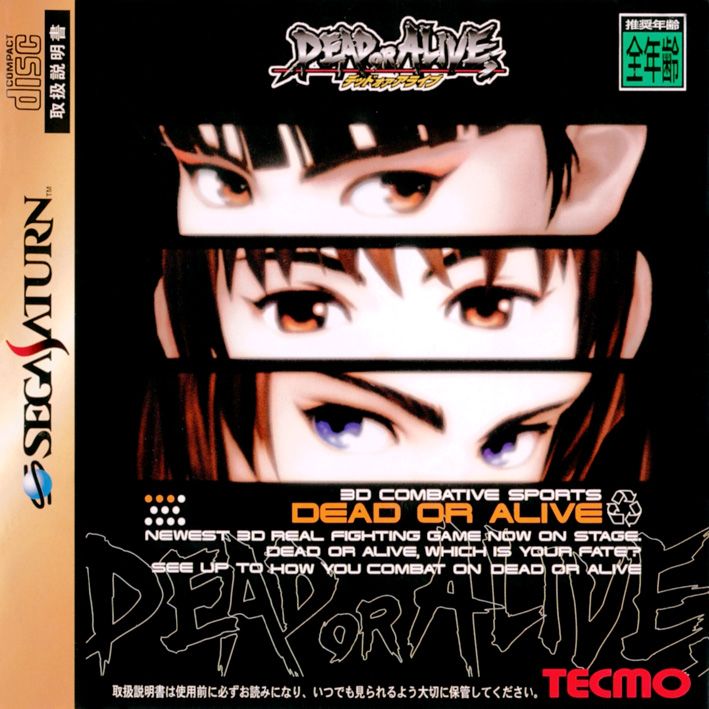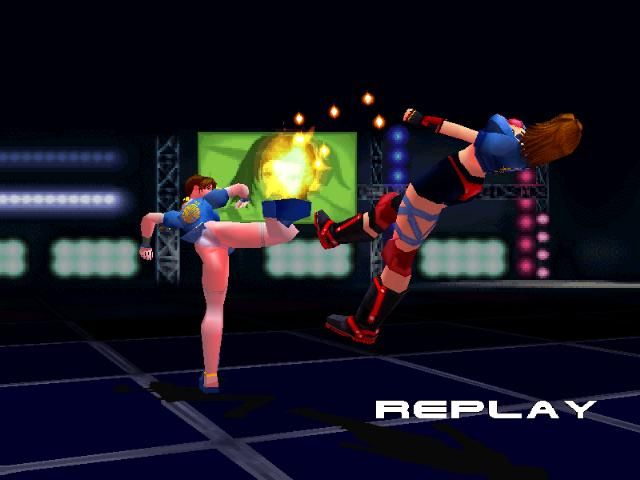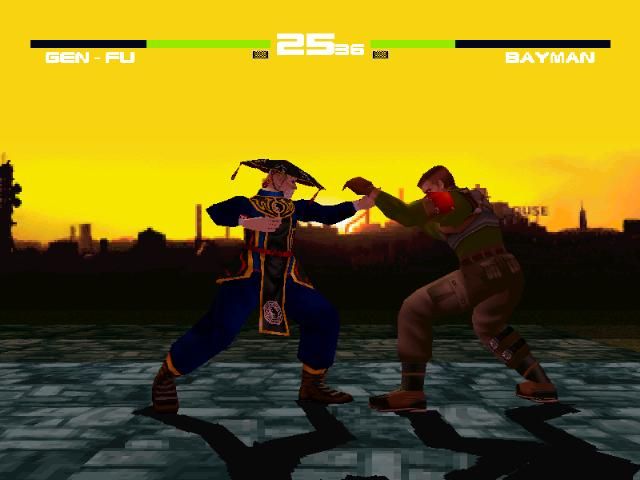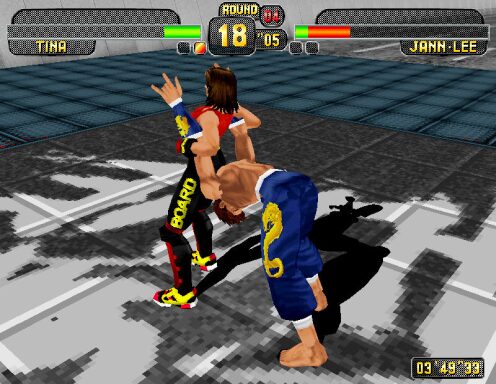Retro Replay Review
Gameplay
Dead or Alive’s gameplay stands out as a tight, responsive fighting system that emphasizes both speed and strategy. Matches unfold within compact arenas, challenging players to master spatial awareness as much as individual moves. While the controls remain approachable for newcomers—thanks to a straightforward punch, kick, and throw layout—there’s surprising depth in chaining attacks, timing counter-holds, and weaving together combos.
(HEY YOU!! We hope you enjoy! We try not to run ads. So basically, this is a very expensive hobby running this site. Please consider joining us for updates, forums, and more. Network w/ us to make some cash or friends while retro gaming, and you can win some free retro games for posting. Okay, carry on 👍)
The hallmark “hold” system sets Dead or Alive apart from other 3D fighters of its era. Strikes beat grabs, grabs beat holds, and holds beat strikes, creating a dynamic rock-paper-scissors mechanic that rewards prediction and reflexes. This balance ensures that neither button-mashing novices nor seasoned veterans can dominate purely through repetition; instead, victory comes from reading opponents, exploiting openings, and adapting on the fly.
Each character brings a unique fighting style and personal flair to the ring. Whether you favor the nimble, acrobatic strikes of Kasumi or the powerful ninja techniques of Ryu Hayabusa, there’s a grappler to suit every taste. These distinct move sets, combined with variable stage hazards—such as breakable walls and shifting platforms—keep matches fresh and encourage players to learn multiple fighters to stay competitive.
Graphics
For its time, Dead or Alive pushed the Sega Saturn hardware to its limits, delivering polished character models and fluid animations that still impress today. The developers paid close attention to detail, from facial expressions to the smooth, lifelike movements during special attacks. Even in cramped arenas, the visual fidelity never looked muddy or cluttered.
Perhaps most notorious—and eye-catching—is the physics engine dedicated to character presentation. The game introduced exaggerated, bouncing breast physics that quickly became a talking point among fans and critics alike. While this feature may be contentious, there’s no denying it adds a level of visceral realism to every jump, dodge, and combo.
Stage design complements the fighter models with vibrant backdrops and interactive environments. Each arena feels distinct, whether you’re battling atop a tranquil Japanese garden perch or within a modern dojo. Subtle background animations and dynamic camera angles during critical blows heighten the spectacle, ensuring visual engagement throughout each bout.
Story
Dead or Alive opts for a minimalistic narrative, focusing squarely on the thrill of competitive one-on-one combat. Rather than weaving an intricate lore, the game sets up a tournament framework that serves as a backdrop for each fighter’s personal motivations. This streamlined approach keeps the action front and center, appealing to players who prioritize gameplay over plot.
Despite the loose storyline, each character receives a brief biography outlining their background, hobbies, and reasons for entering the tournament. These tidbits—like Ryu Hayabusa’s love of sushi and mountain climbing—add flavor and personality without bogging down the experience. It’s enough to spark curiosity about the fighters without requiring lengthy cutscenes.
For those who crave deeper engagement, the lack of an elaborate story can be a drawback. There’s no branching narrative, hidden endings, or dramatic plot twists waiting to be unlocked. However, the straightforward “beat-the-bracket” progression feels fitting for the arcade-inspired combat, allowing players to jump directly into the action without sifting through dialogue or exposition.
Overall Experience
Dead or Alive lays the foundation for one of the most enduring 3D fighting franchises, blending accessible mechanics with subtle strategic layers. Whether you’re drawn by the rapid-paced matches or the unique cast of characters, the game delivers an experience that’s both inviting to newcomers and rewarding for veterans.
Local multiplayer in Dead or Alive remains a highlight. The quick matches and varied fighter roster make it an ideal party game, fostering both friendly rivalries and intense showdowns. Even without an extensive single-player campaign, the game’s replayability is driven by mastering different characters and climbing the unofficial skill ladder among friends.
While modern fighting games have since raised the bar in terms of graphics and online features, the original Dead or Alive retains a timeless quality. Its blend of realistic combat, memorable character designs, and fast-paced arenas ensures that it remains a worthwhile pick for anyone interested in the roots of 3D fighting. Prospective buyers looking for classic arcade-style action with a dash of flair will find it a compelling addition to their collection.
 Retro Replay Retro Replay gaming reviews, news, emulation, geek stuff and more!
Retro Replay Retro Replay gaming reviews, news, emulation, geek stuff and more!









Reviews
There are no reviews yet.